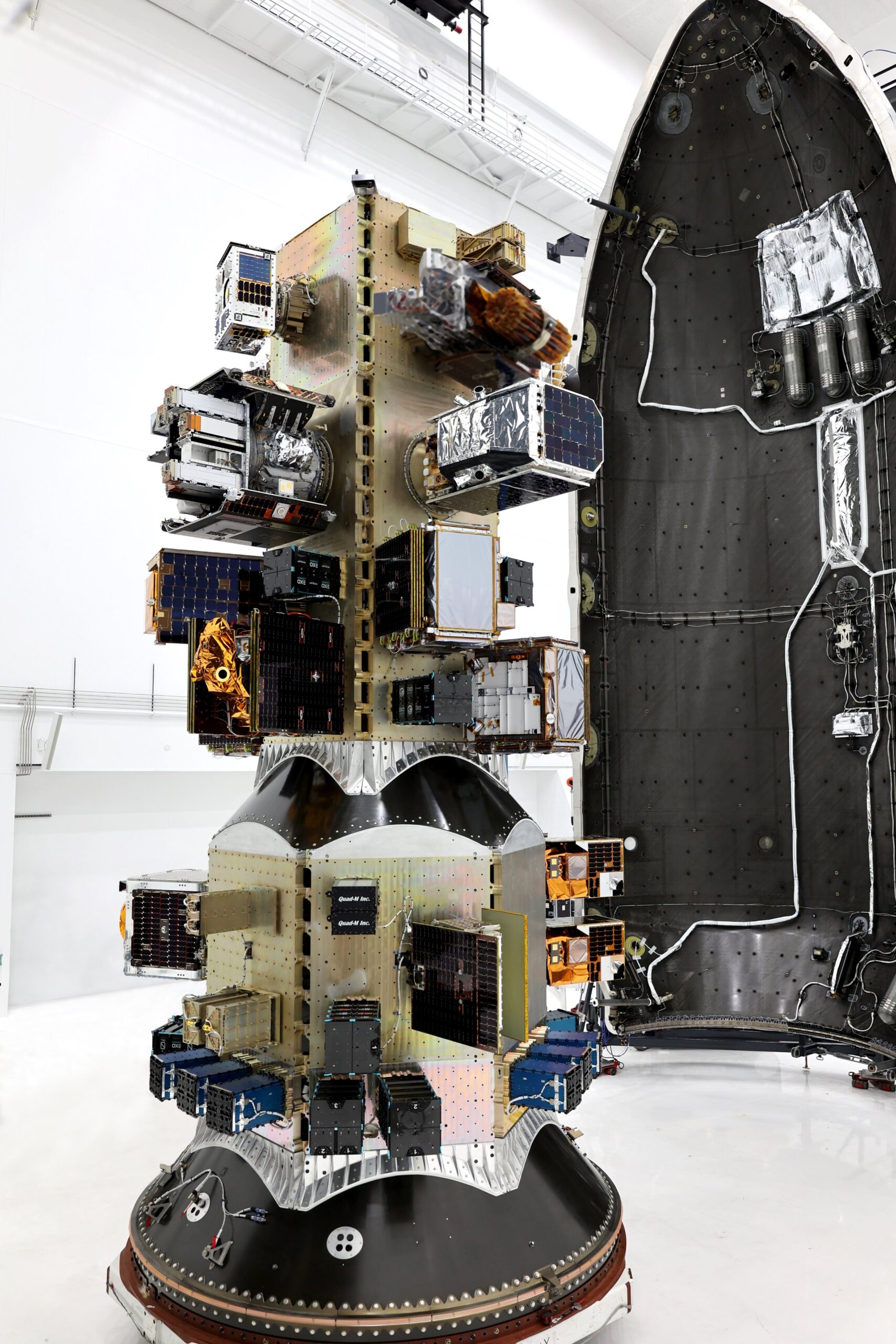Latest News

Satellites stacked ahead of launch on the Falcon 9 Transporter-11 rideshare mission. Photo: SpaceX
SpaceX launched 116 payloads to orbit on Friday in the 11th Transporter dedicated smallsat rideshare mission.
A Falcon 9 rocket launched the mission on Aug. 16 from Vandenberg Space Force Base in California, lifting off at 11:56 a.m. PT. The mission was set to last 2 hours and 36 minutes to deploy all payloads.
For Planet, the mission was the first launch of a hyperspectral satellite, Tanager-1, which launched along with 36 SuperDoves. Tanager-1 is launched in partnership with the Carbon Mapper Coalition and will provide hyperspectral data to both Carbon Mapper and Planet’s regular business. The satellite is designed to monitor methane and carbon dioxide for a variety of use cases.
Exolaunch supported 42 satellites on the mission, a record number of satellites on one mission for the company. Exolaunch supported integration for Planet’s satellites, along with a number of other customers. Its customers included two satellites for Australia’s ARC Training Centre CUAVA for cubesats and UAVs, CUAVA-2 and Waratah Seed-1. The company’s other customers included seven satellites for Spire Global, Sateliot, Unseenlabs, Aethero Space, Capella Space, Poland’s Creotech (Poland), the European Space Agency, Germany’s Fraunhofer Institute, Indonesian Ministry of Marine Affairs and Fisheries via GomSpace, HawkEye 360‘s cluster 10, Loft Orbital, Open Cosmos, Turkey’s Plan-S, Portland State Aerospace Society, Taiwan’s Pyras Technology and Rapidtek, three satellites for Satellogic, Senegal Ministry of Higher Education, Research and Innovation (MESRI), and Hubble Labs via Spire Global.
NanoAvionics built four satellites — Chile’s first private satellite Lemu Nge, which means Forest Eye and will monitor the world’s forests; HYPSO-2 for the Norwegian University of Science and Technology to monitor ocean health; and two 3U nanosatellites, for an undisclosed customer that will be used for a red-green-blue (RGB) Earth observation and a communication mission.
Exolaunch also supported an Earth observation (EO) satellite for the United Arab Emirates via Yahsat and Bayanat, provided by Iceye, which had three other satellites on the mission.
Climate tech company Hydrosat launched its first satellite, VanZyl-1, which will collect high-resolution thermal imagery to monitor water stress, crop health, and climate-related events.
Synthetic aperture radar (SAR) provider Umbra launched a pair of SAR satellites, Umbra-09 and Umbra-10, on the mission.
Rideshare integrator SEOPS integrated five payloads on the mission, including two payloads for NASA’s Space Technology Mission Directorate’s Small Spacecraft Technology program; Iperdrone funded by the Italian Space Agency; Train Rapid On Payload (TROOP-F2) hosted payload for NearSpace Launch; and Water Resources in Efficient Networks (WREN-1) from Hungarian space company C3S.
ISISpace manifested a number of customers including a homegrown satellite for South Australia, Kanyini, equipped with dual IoT and imager payloads. Kanyini is the first State Government-funded satellite in the nation and was built by a local team of South Australian-based companies – SmartSat CRC, Inovor, and Myriota.
Other customers included integrator Maverick Space Systems; two for Tomorrow.io, and the TYCHE imaging satellite for the U.K. military, manifested by Surrey Satellite Technology Limited (SSTL).
Get the latest Via Satellite news!
Subscribe Now